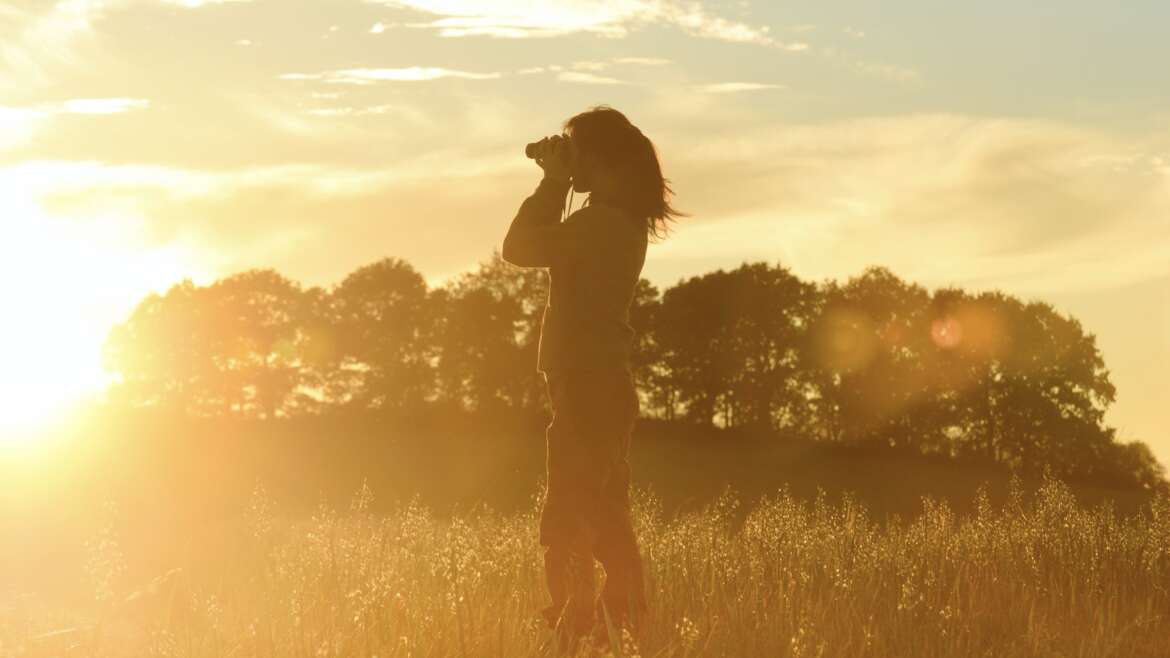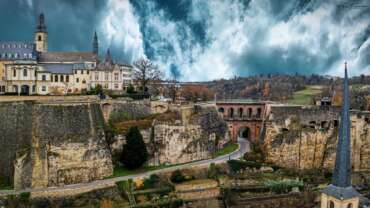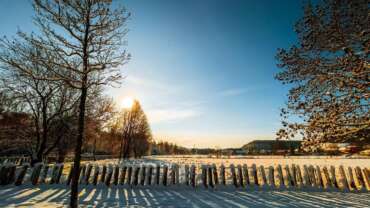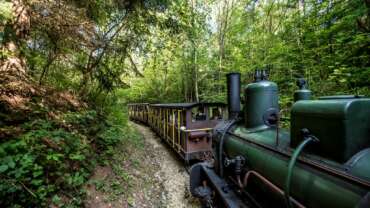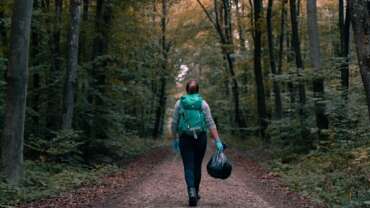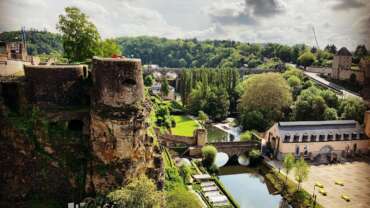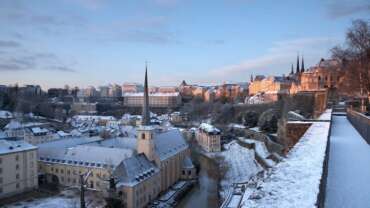Nature Escape in Luxembourg
CYCLING AND MOUNTAIN BIKING IN LUXEMBOURG
Did you know that Luxembourgers have a passion for cycling?
Great champions, like Charly Gaul, nicknamed “Angel of the mountains”, stood out in the world’s most prestigious races such as the Tour de France and the Giro d’Italia. Even nowadays, their legacy nurtures the passion of Luxembourg’s inhabitants for this sport. But the country has more to offer in terms of cycling: 600 km cycle paths and another 300 km still to come, 700 km mountain bike tracks, magnificent varied landscapes, well preserved and abundant nature.
You will find that Luxembourg has something to convince anyone who loves cycling. Throughout the country, the cycle paths are well-marked and mostly in remote locations away from traffic. Furthermore, the network is regularly maintained. You see, there is nothing that stands in the way of a satisfying trip. The only thing left to do is to gear up before you ride.
Various regional tourist offices offer seasonal guided bike and mountain bike tours for individuals and groups. These must be booked in advance.
NATURE RESERVES IN LUXEMBOURG
In the Moselle region the nature reserve of Haff Remich presents an inestimable biotope. The nature reserves in Luxembourg are not only meant for hiking, cycling or trekking but are located in small villages with a diversified leisure program. Cosy little restaurants and shops with a broad range of locally produced delicacies turn each visit into a delicious discovery.
Biodiversum Nature Reserve Haff Réimech
Biodiversum: nature meets futuristic architecture
The futuristic nature conservation centre Biodiversum was created on an artificial island at the foot of the vineyards in the Haff Réimech nature conservation area. On the ground floor, there are displays about the history of the nature conservation area and about the underwater world. On the top floor, visitors can learn all about the birds and plants here, other nature conservation areas in Luxembourg, environmental protection and sustainability. It’s a good idea to combine your visit here with a birdwatching tour of the nature reserve, which is of great importance for the huge diversity of bird species here and the wealth of fauna and flora. In summer, you can cool off in the nearby gravel pit ponds.
Natural conservation area "Strombierg"
This former plaster mining site now holds a natural conservation area with a 4,5-km-long nature path. It is home to a range of protected plant species and a rich wildlife. The path is duly signalled and starts under the bridge in Schengen.
THE NATURE PARK OUR
The Nature Park “Our”, officially created in 2005, is located in the North-East of Luxembourg and has a common border with Germany and Belgium.
11 districts with 14,000 inhabitants and a total area of 305 km create a platform for the sustainable development of the region. Other objectives relate to economic development in harmony with the natural wealth of the region and the quality of life of its inhabitants.
In this rural area, agriculture has always played an important role. Several initiatives aimed at improving income and agricultural diversification have been developed.
The Nature Park of the Upper Sûre
Located in the northwest of Luxembourg, the Upper Sûre Nature Park is marked by its artificial lake of 380 ha, the country’s largest drinking water reservoir. This region is also known as Luxembourg’s “water area”, and the reservoir provides the framework for the development of sustainable tourism and leisure activities.
The steep and wooded slopes, which often come right down to the shore, create a very natural and untouched landscape… a great invitation to relaxation!
A multitude of hiking trails and themed itineraries allow visitors to discover interesting aspects of the regional nature, culture and history.
Nature reserve "Beetebuerger Bësch"
Time to lace up those boots!
This forest between Leudelange and Bettembourg seems fairly ordinary at first: magnificent trees, beautiful landscapes and the joyful chirping of the birds to accompany you along the way. And yet, if you trek a little deeper into this welcoming nature reserve and keep your eyes open, you might spot some rare species. The massif forest consists primarily of beech trees, and a path takes you along streams and pools all the way to the Léiffraeweier pond. Be on the lookout for the ashen woodpecker, the black woodpecker and the sea woodpecker.
And at dusk, if you gaze up at the branches and the sky, you might catch a glimpse of a Natterer or Bechstein’s bat. You’re not afraid of bats, right?
Nature reserve "Brucherbierg Lallengerbierg"
A unique walk among butterflies and orchids
Between the municipalities of Esch-sur-Alzette, Kayl and Schifflange is the 267-hectare Brucherbierg-Lalléngerbierg nature reserve—a perfect area for walking, cycling or mountain biking. When open-pit mining operations in the area were finally discontinued, the territory resembled a lunar landscape with bright red soil. There was no vegetation to speak of—just dry, barren wasteland. But little by little, the land has been reclaimed by nature. The rocky ground has been transformed into dry grassland, the bats have returned, and to our delight, there are now more than 500 species of butterflies fluttering among the orchids.
What a dream!
Nature reserve "Dumontshaff"
Discover the Alzette valley
This educational trail invites the whole family to discover the Alzette valley and learn about the forest along the way. No textbooks, no lectures—the landscape is a life-size laboratory. You can learn about the alluvial process and see all kinds of protected birds that are part of the European Natura 2000 network. The spectacular results of the watercourse restoration project will leave you speechless!
Trail leading through the nature reserve: Sentier nature “Dumontshaff”.
Nature reserve "Ellergronn"
From mines to nature reserves
There are certain landscapes that change dramatically over time, and the Ellergronn Nature Reserve is one of them. Formerly known as the Kazebierg extraction zone, located south of Esch-sur-Alzette, this area was primarily used for iron-ore mining until a few decades ago. After the mines were abandoned, the land was transformed into a multitude of habitats, which now host to a wide variety of species. The animals make their homes in the middle of the ponds, in the region’s dry grasslands, in the alder and ash trees, along the banks of streams…no wonder they love it here! The area is also part of the European Natura 2000 network of protected nature reserves.
The perfect place for a hike or healthy day in the great outdoors.
Nature reserve "Grouf"
This 153 ha large natural conservation area fitted with a nature guided path provides a unique insight into the local ecosystem. In these zones covered by beech and oak trees the emphasis lies on natural conservation and renewal, which means that the area is left to develop naturally, i.e. without human intervention. Visitors will find a general information board at the “entrance” of the area, while most interesting locations along the 4.2 km long nature path are listed on a special leaflet available at the municipal administration from Schengen in Remerschen and the Tourist Information Centre in Schengen.
The circular path, which starts in Schengen (under the Moselle bridge towards the German town of Perl), is signalled by an orange-coloured symbol representing a stag beetle on a green background.
Nature reserve "Haard, Hesselsbierg, Staebierg"
The largest nature reserve in the country
The Haard Hesselsbierg Staebierg nature reserve spans three municipalities: Dudelange, Kayl and Rumelange. With an area of 600 hectares, it is the largest nature reserve in the country. What makes it so unique?
The reserve, which is part of the European Natura 2000 network, is largely composed of former open-pit mining sites. After mining operations ceased, it was officially declared a nature reserve in 1994. Since then, nature has slowly reclaimed the land, and today it is home to numerous indigenous species. Once a semi-dry landscape, its grasses have been gradually transformed into paradises for fauna and flora.
There are, however, some remains from the former mining era still visible, offering visitors and hikers a glimpse of what the landscape used to look like. You can see the layers of ore and limestone, and discover the many footprints left behind as a testament to the past. And to help you better understand the reserve’s rich heritage and culture, there are 16 explanatory panels to guide you along the way.
Nature reserve "Manternacher Fiels" A Wiewesch
In the heart of Manternach, the nature conservation centre A Wiewesch welcomes visitors interested in nature conservation and cultural history. The Nature Conservation Centre is located in the heart of the rural village of Manternach in a former farmhouse. A Wiewesch organizes numerous activities and excursions in nature for young and old. On request, visitors can book a guided walk to the Manternacher Fiels.
Throughout the year, the A Wiewesch team offers various biodiversity and sustainability activities. Another highlight of the centre is the production of fresh apple juice, the “Viz”, in October.
Exhibition “Nature Conservation & Agriculture”
The exhibition at A Wiewesch shows the interdependence between nature and agriculture. It presents the conflicts between industrial agriculture, far from natural practices, and nature conservation. Moreover, it shows innovative and proven ways to reconcile agriculture and biodiversity.
The Nature Reserve Manternacher Fiels
The “Manternacher Fiels” is both a national and a European protected area. The heart of the area is the canyon forest, which covers about 57 hectares and is the largest canyon forest in Luxembourg in terms of area. It has not been cultivated for about 50 years. Human intervention in the forest area is limited to keeping the hiking trails open and free. Since 2012, the Manternacher Fiels has officially been a natural forest reserve. On nature trails and hiking paths through the nature reserve visitors can enjoy impressive experiences.
Nature reserve Aarnescht
The nature reserve Aarnescht is mainly known for its high number of different orchid species. The south-facing slopes of Aarnescht create a unique climate, which gives the Aarnescht a Mediterranean character.
Nature Reserve Pëttenerbësch
The nature reserve “Pëttenerbësch” hosts a variety of animal and plant species on a surface of around 67 ha. A special highlight: in the middle of the forest you will find the geographical centre of the country. A 2-hour hiking tour invites you to discover the different biotopes.
Nature reserve Schlammwiss
The 375 ha large wetland Schlammwiss in Uebersyren is the largest, connected reed area in the country. Beside numerous activities during which you can discover this unique nature reserve, there is a bird ringing station allowing important research and studies about biodiversity and nature conservation.
LAKES AND RIVERS, PARKS AND GARDENS
In Luxembourg, lakes and rivers are crisscrossing plains and forests, thus creating unique natural sceneries. The lakes of Luxembourg are true leisure centres. Lake swimming, water sports, fishing or boating in pedaloes, those are just a small selection of the activities offered around the Upper-Sûre Lake, the Lake of Echternach or the Lakes of Remerschen. With their takeaways and playgrounds, numerous smaller swimming lakes welcome visitors the whole year around. What about taking a boat trip on the river Moselle? A playful way to discover the fabulous landscapes throughout the country.
Luxembourg has an abundance of gardens and parks open to public. Several castles and fortifications dispose of a proper park to visit the whole year through. With their botanical wildlife and elaborate sculptures, these parks make for lively green spaces. The magnificently landscaped gardens in Luxembourg are a true invitation to contemplate and relax, far away from the city centre. Just by way of example, one could mention the Parks of Pétrusse with its rocks and ruins or the Central park of Edouard André, a magnificent English garden at the very heart of Luxembourg.



